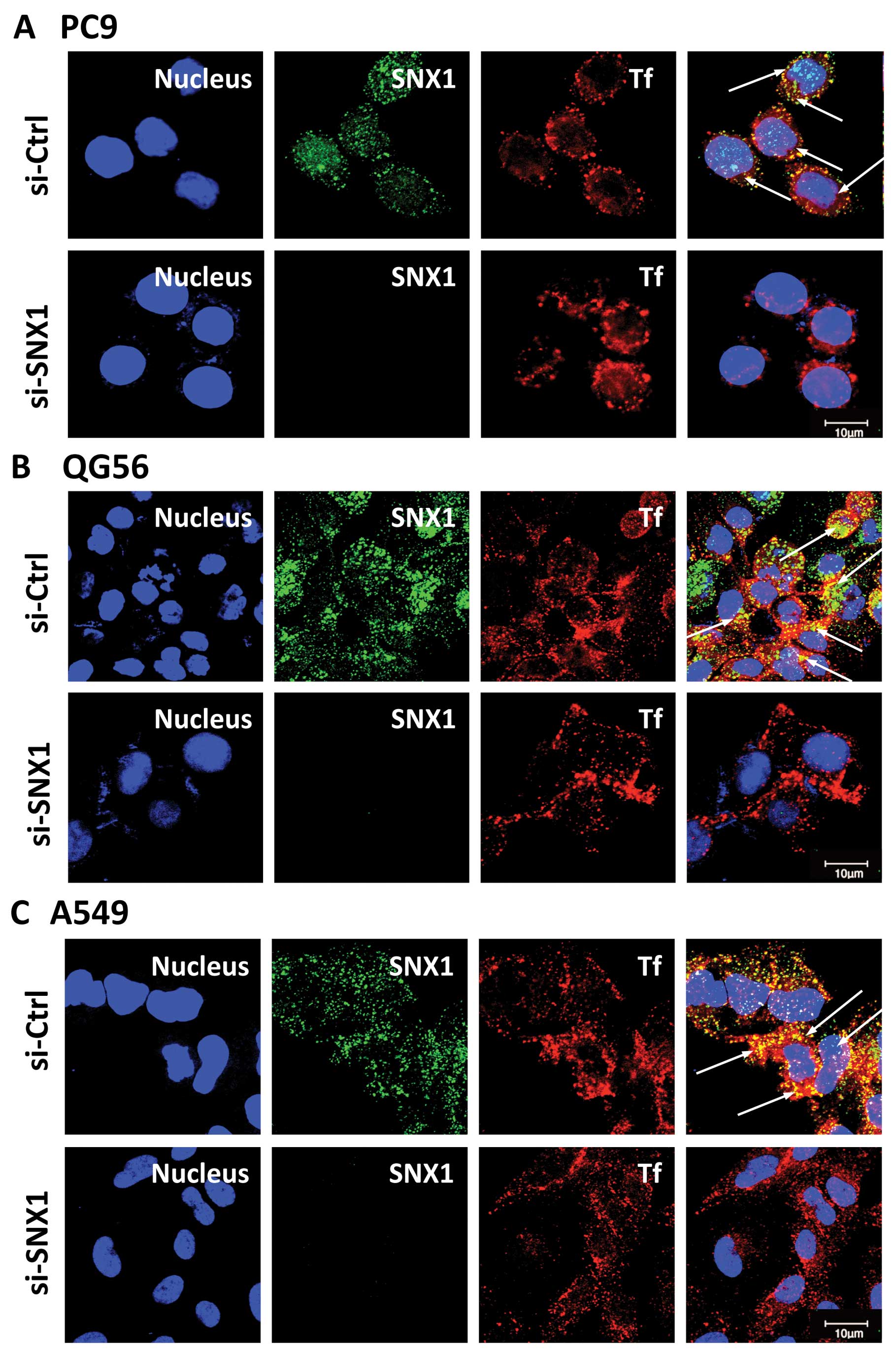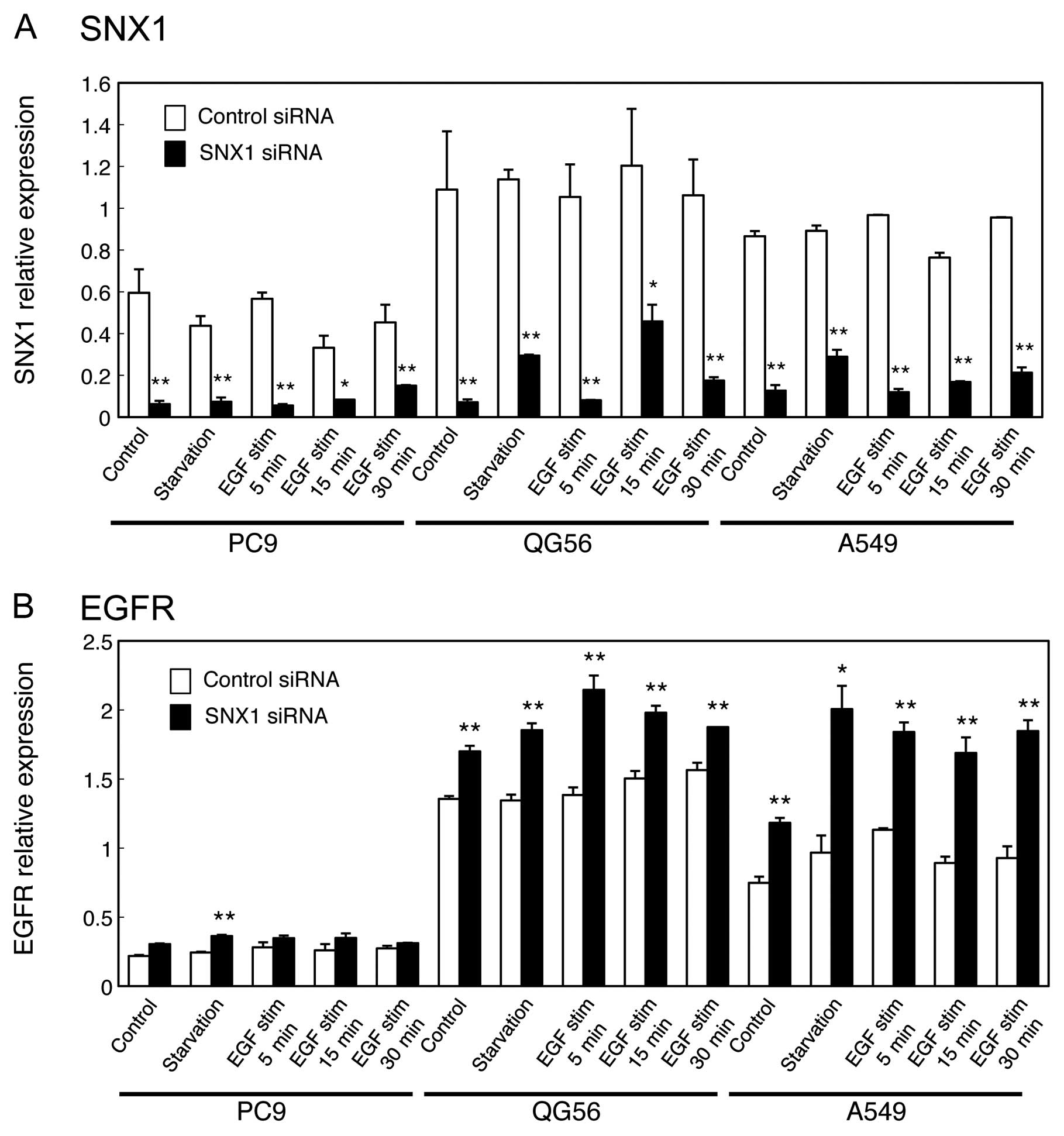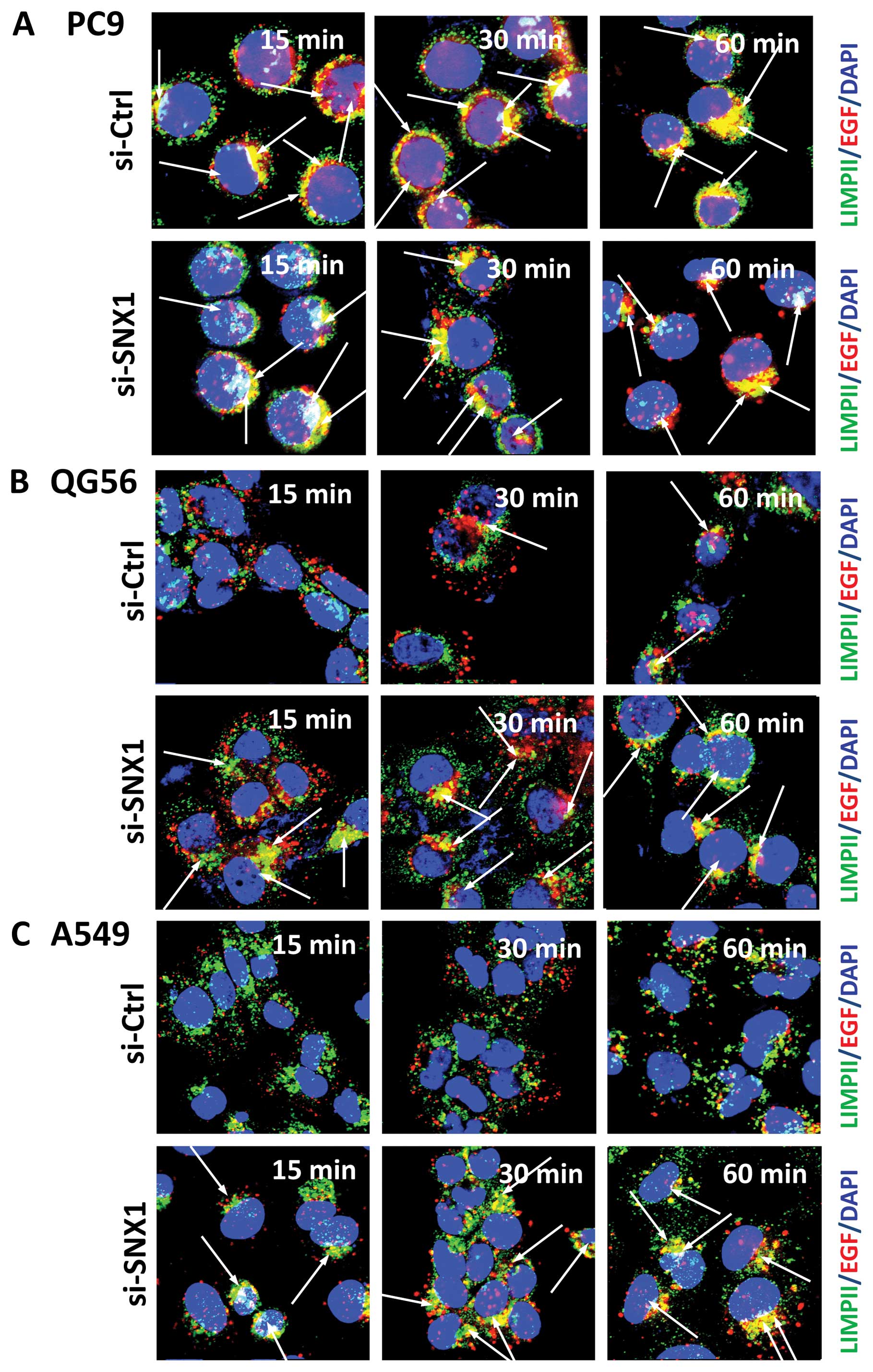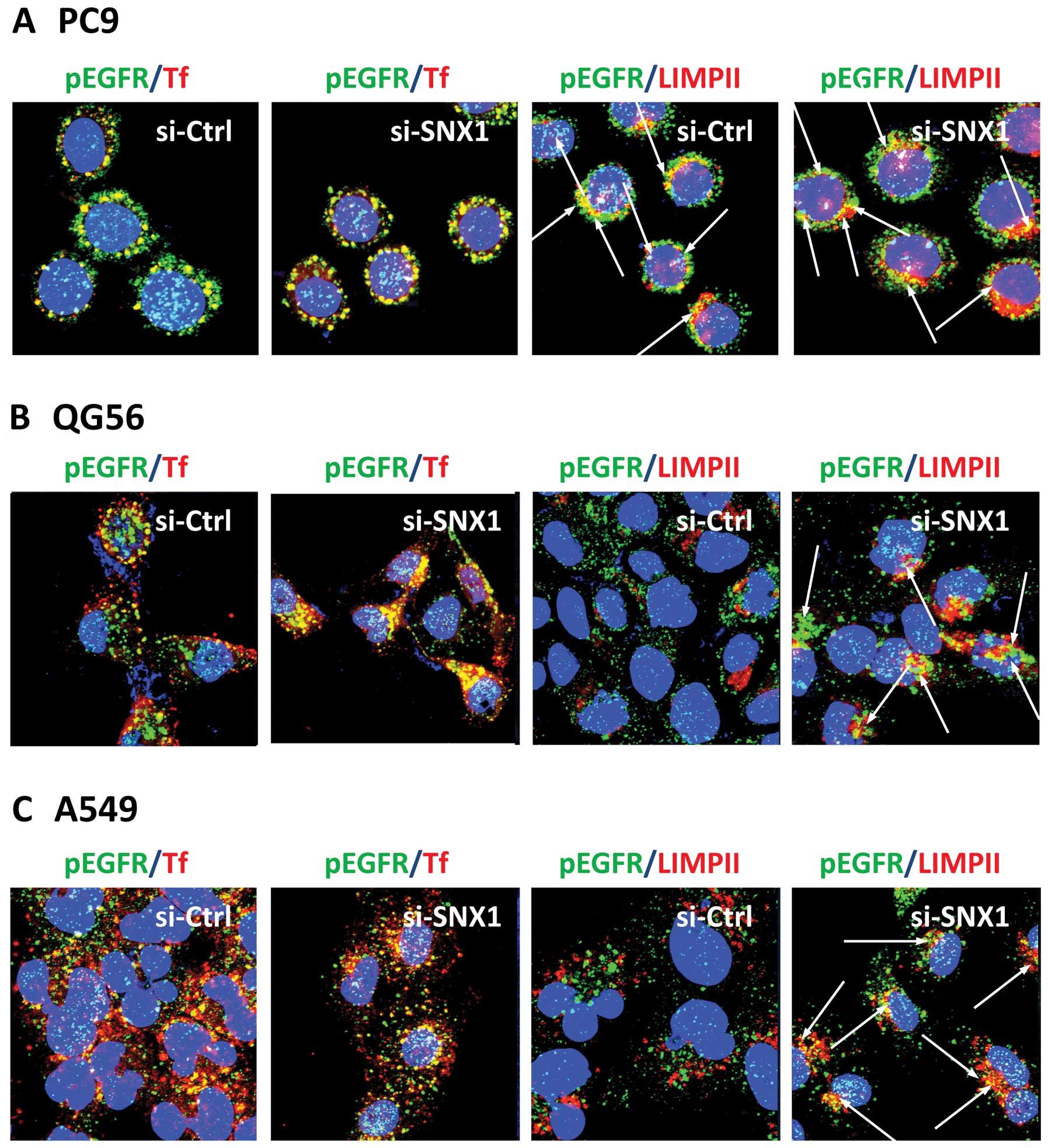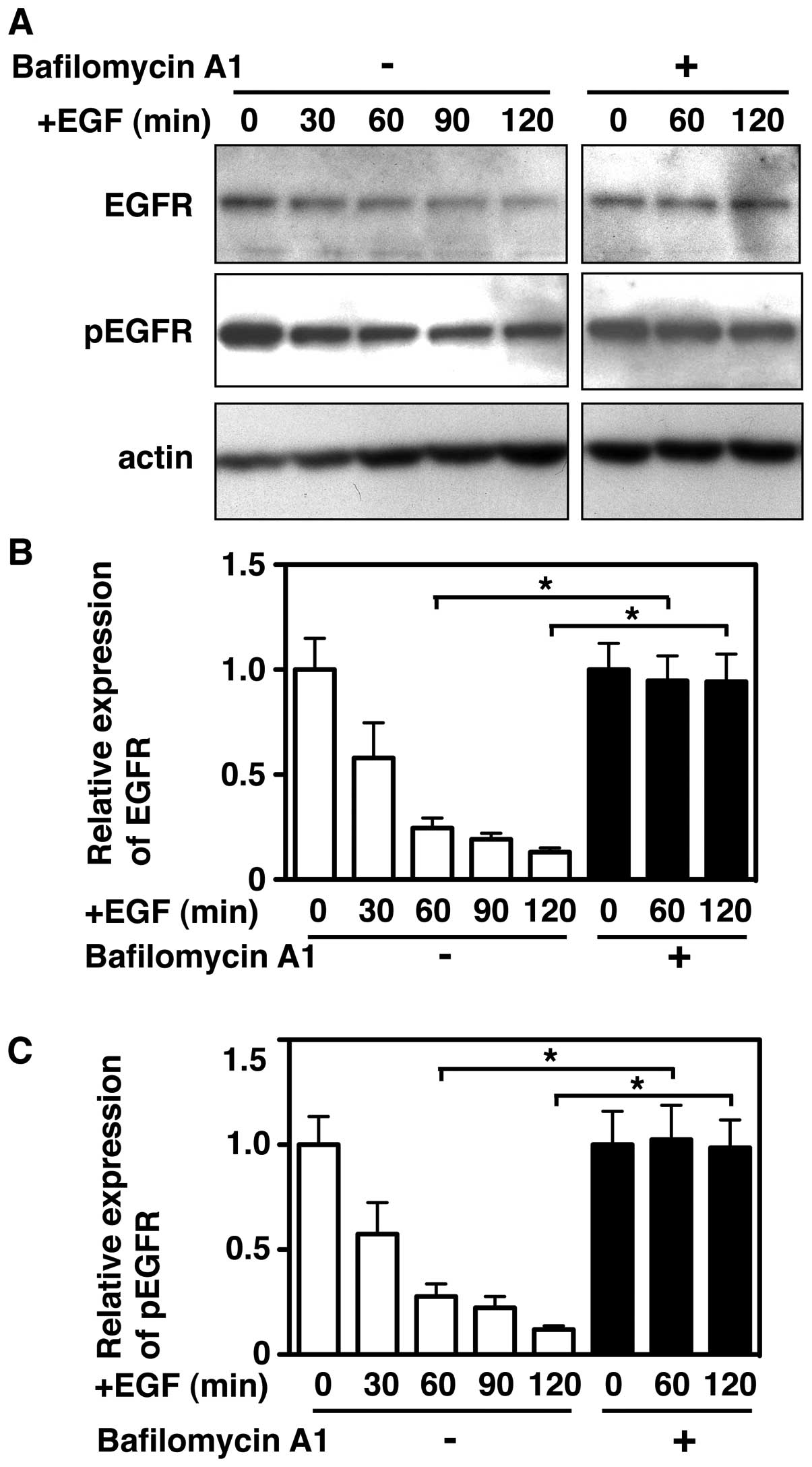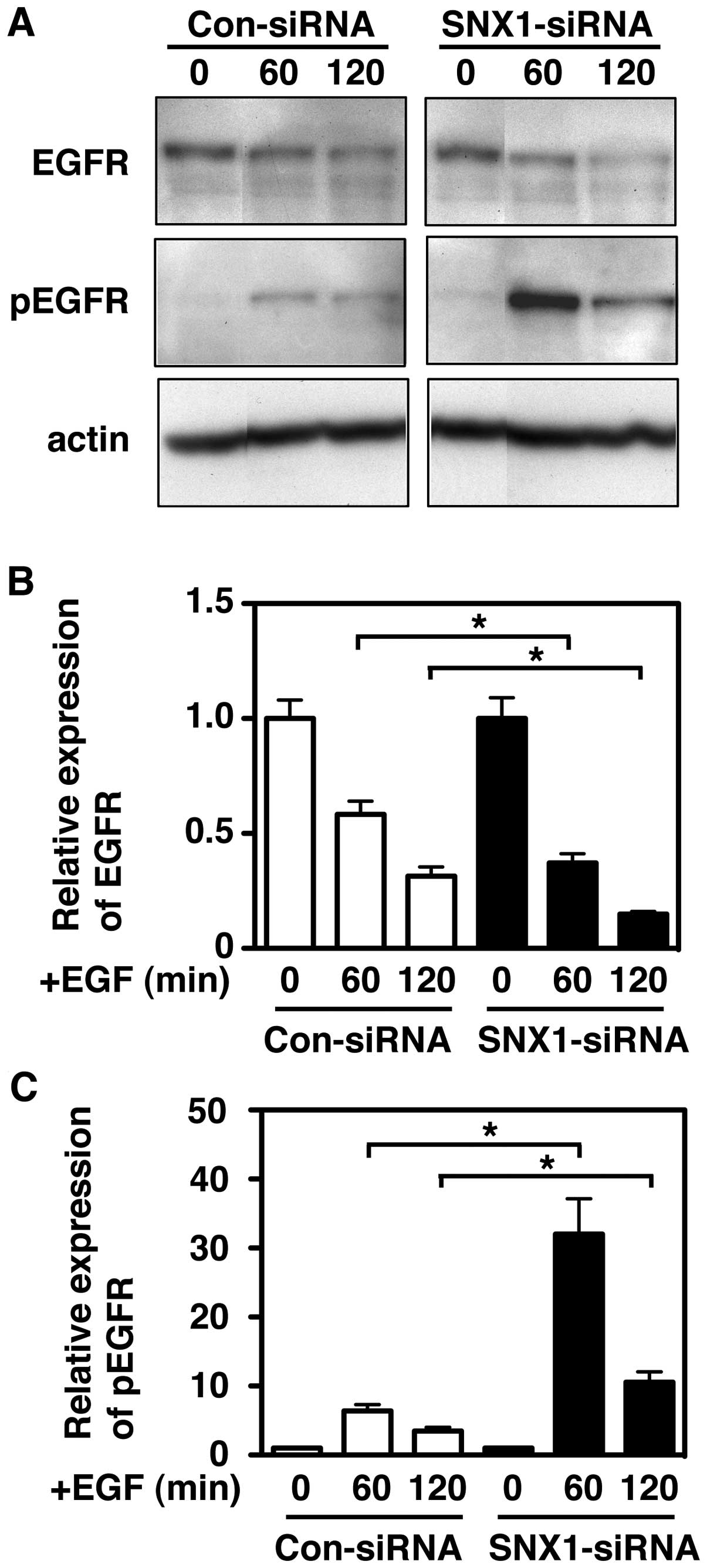|
1
|
Ullrich A and Schlessinger J: Signal
transduction by receptors with tyrosine kinase activity. Cell.
61:203–212. 1990. View Article : Google Scholar : PubMed/NCBI
|
|
2
|
Carpenter G: The EGF receptor: a nexus for
trafficking and signaling. Bioessays. 22:697–707. 2000. View Article : Google Scholar : PubMed/NCBI
|
|
3
|
Yarden Y: The EGFR family and its ligands
in human cancer signaling mechanisms and therapeutic opportunities.
Eur J Cancer. 37:3–8. 2001. View Article : Google Scholar : PubMed/NCBI
|
|
4
|
Schlessinger J: Common and distinct
elements in cellular signaling via EGF and FGF receptors. Science.
306:1506–1507. 2004. View Article : Google Scholar : PubMed/NCBI
|
|
5
|
Mendelsohn J and Baserga J: The EGF
receptor family as targets for cancer therapy. Oncogene.
19:6550–6565. 2000. View Article : Google Scholar : PubMed/NCBI
|
|
6
|
De Bono JS and Rowinsky EK: The ErbB
receptor family: a therapeutic target for cancer. Trends Mol Med.
8:19–26. 2002.PubMed/NCBI
|
|
7
|
Woodburn JR: The epidermal growth factor
receptor and its inhibition in cancer therapy. Pharmacol Ther.
82:241–250. 1999. View Article : Google Scholar : PubMed/NCBI
|
|
8
|
Baselga J and Averbuch SD: ZD1839
(‘Iressa’) as an anticancer agent. Drugs. 60(Suppl 1): S33–S42.
2000.
|
|
9
|
Arteaga CL and Johnson DH: Tyrosine kinase
inhibitors-ZD1839 (Iressa). Curr Opin Oncol. 13:491–498. 2001.
View Article : Google Scholar : PubMed/NCBI
|
|
10
|
Barker AJ, Gibson KH, Grundy W, Godfrey
AA, Barlow JJ, Healy MP, Woodburn JR, Ashton SE, Curry BJ, Scarlett
L, Henthorn L and Richards L: Studies leading to the identification
of ZD1839 (IRESSA): an orally active, selective epidermal growth
factor receptor tyrosine kinase inhibitor targeted to the treatment
of cancer. Bioorg Med Chem Lett. 11:1911–1914. 2001. View Article : Google Scholar
|
|
11
|
Ono M, Hirata A, Kometani T, Miyagawa M,
Ueda S, Kinoshita H, Fujii T and Kuwano M: Sensitivity to gefitinib
(Iressa, ZD1839) in non-small cell lung cancer cell lines
correlates with dependence on the EGF receptor/extracellular
signal-regulated kinase 1/2 and EGF receptor/Akt pathway for
proliferation. Mol Cancer Ther. 3:465–472. 2004.
|
|
12
|
Nishimura Y, Bereczky B and Ono M: The
EGFR inhibitor gefitinib suppresses ligand-stimulated endocytosis
of EGFR via the early/late endocytic pathway in non-small cell lung
cancer cell lines. Histochem Cell Biol. 127:541–553. 2007.
View Article : Google Scholar : PubMed/NCBI
|
|
13
|
Nishimura Y, Yoshioka K, Bereczky B and
Itoh K: Evidence for efficient phosphorylation of EGFR and rapid
endocytosis of phosphorylated EGFR via the early/late endocytic
pathway in a gefitinib-sensitive non-small cell lung cancer cell
line. Mol Cancer. 7:1–13. 2008. View Article : Google Scholar : PubMed/NCBI
|
|
14
|
Nishimura Y, Yoshioka K, Takiguchi S,
Bereczky B, Nakabeppu Y and Itoh K: A role for SNX1 in the
regulation of EGF-dependent phosphorylated EGFR endocytosis via the
early/late endocytic pathway in a gefitinib-sensitive human lung
cancer cells. Curr Signal Transduct Ther. 6:383–395. 2011.
View Article : Google Scholar
|
|
15
|
Kurten RC, Cadena DL and Gill GN: Enhanced
degradation of EGF receptors by a sorting nexin, SNX1. Science.
272:1008–1010. 1996. View Article : Google Scholar : PubMed/NCBI
|
|
16
|
Worby CA and Dixon JE: Sorting out the
cellular function of sorting nexins. Nat Rev Mol Cell Biol.
3:919–931. 2002. View
Article : Google Scholar : PubMed/NCBI
|
|
17
|
Horazdovsky BF, Davies BA, Seaman MN,
McLaughlin SA, Yoon S and Emr SD: A sorting nexin-1 homologue,
Vps5p, forms a complex with Vps17p and is required for recycling
the vacuolar protein-sorting receptor. Mol Biol Cell. 8:1529–1541.
1997. View Article : Google Scholar : PubMed/NCBI
|
|
18
|
Nothwehr SF and Hindes AE: The yeast
VPS5/GRD2 gene encodes a sorting nexin-1-like protein required for
localizing membrane proteins to the late Golgi. J Cell Sci.
110:1063–1072. 1997.PubMed/NCBI
|
|
19
|
Seaman MN, McCaffery JM and Emr SD: A
membrane coat complex essential for endosome-to-Golgi retrograde
transport in yeast. J Cell Biol. 142:665–681. 1998. View Article : Google Scholar : PubMed/NCBI
|
|
20
|
Zhong Q, Lasar CS, Tronchere H, Sato T,
Meerloo T, Yeo M, Songyang Z, Emr SD and Gill GN: Endosomal
localization and function of sorting nexin 1. Proc Natl Acad Sci
USA. 99:6767–6772. 2002. View Article : Google Scholar : PubMed/NCBI
|
|
21
|
Carlton J, Bujny M, Peter BJ, Oorschot VM,
Rutherford A, Mellor H, Klumperman J, McMahon HT and Cullen PJ:
Sorting nexin-1 mediates tubular endosome-to-TGN transport through
coincidence sensing of high-curvature membranes and
3-phosphoinositides. Curr Biol. 14:1791–1800. 2004. View Article : Google Scholar : PubMed/NCBI
|
|
22
|
Gullapalli A, Garrett TA, Paing MM,
Griffin CT, Yang Y and Trejo J: A role for sorting nexin 2 in
epidermal growth factor receptor down-regulation: evidence for
distinct functions of sorting nexin 1 and 2 in protein trafficking.
Mol Biol Cell. 15:2143–2155. 2004. View Article : Google Scholar : PubMed/NCBI
|
|
23
|
Okazaki I, Himeno M, Ezaki J, Ishikawa T
and Kato K: Purification and characterization of an 85 kDa
sialoglycoprotein in rat liver. J Biochem. 111:763–769.
1992.PubMed/NCBI
|
|
24
|
Nishimura Y, Yoshioka K, Bernard O, Himeno
M and Itoh K: LIM kinase 1: evidence for a role in the regulation
of intracellular vesicle trafficking of lysosomes and endosomes in
human breast cancer cells. Eur J Cell Biol. 34:189–213.
2004.PubMed/NCBI
|
|
25
|
Nishimura Y, Yoshioka K, Bernard O,
Bereczky B and Itoh K: A role of LIM kinase 1/cofilin pathway in
regulating endocytic trafficking of EGF receptor in human breast
cancer cells. Histochem Cell Biol. 126:627–638. 2006. View Article : Google Scholar : PubMed/NCBI
|
|
26
|
Nishimura Y, Bereczky B, Yoshioka K,
Taniguchi S and Itoh K: A novel role of Rho-kinase in the
regulation of ligand-induced phosphorylated EGFR endocytosis via
the early/late endocytic pathway in human fibrosarcoma cells. J Mol
Histol. 42:427–442. 2011. View Article : Google Scholar : PubMed/NCBI
|
|
27
|
Kornfeld S and Mellman I: The biogenesis
of lysosomes. Ann Rev Cell Biol. 5:483–525. 1989. View Article : Google Scholar
|
|
28
|
Sandoval IV, Arredondo JJ, Alcalde J,
Gonzalez-Noriega A, Vandekerckhove J, Jimenez MA and Rico M: The
residues Leu (Ile) 475-Ile (Leu) 476, contained in the extended
carboxyl cytoplasmic tail, are critical for targeting of the
resident lysosomal membrane protein LIMPII to lysosomes. J Biol
Chem. 269:6622–6631. 1994.
|
|
29
|
Skarpen E, Johannessen LE, Bjerk K,
Fasteng H, Guren TK, Lindeman B, Thoresen GH, Christoffersen T,
Stang E, Huitfeldt HS and Madshus IH: Endocytosed epidermal growth
Factor (EGF) receptors contribute to the EGF-mediated growth arrest
in A431 cells by inducing a sustained increase in p21/CIP1. Exp
Cell Res. 243:161–172. 1998. View Article : Google Scholar
|
|
30
|
Sorkin A and von Zastrow M: Endocytosis
and signalling: intertwining molecular networks. Nat Rev Mol Cell
Biol. 10:609–622. 2009. View
Article : Google Scholar : PubMed/NCBI
|















